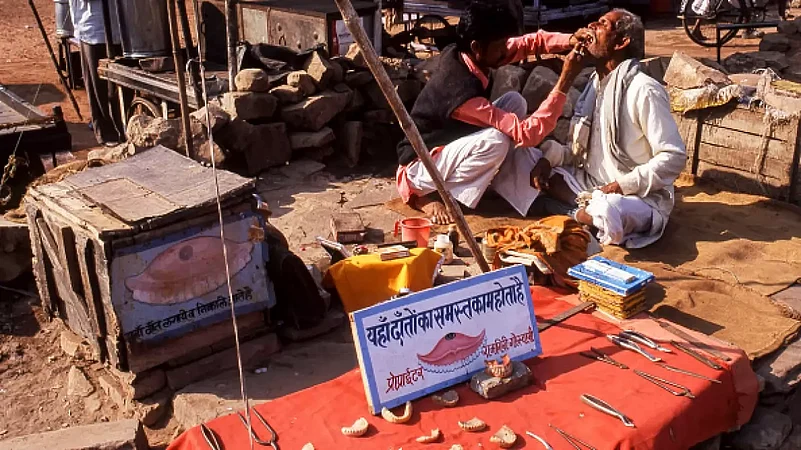Medical Maladies: Stories of Disease and Cure From Indian Languages
Edited and introduced by Haris Qadeer
Niyogi Books
Rs 495
Formerly called medicine in literature, medical humanities is an interdisciplinary sub-field which is considered to be a “dialogue rather than a merger” between the literary and the medical. In its most recent developments, medical humanities deals with constructive criticism of the experiences of illness as well as transformation of the individual through treatment.
Literature has in many of its forms dealt with health and wellness. The Decameron focussed on the first major pandemic in medieval times and in post-Covid times, much of it makes for reading that people can still relate to since the concept of an overarching apocalypse suddenly became very real. Plagues gave rise to a whole new genre of fiction as far as the 21st century was concerned, but given its historical roots, it was not new at all.
Different literary practices have covered a wide variety of approaches towards illness. This has resulted in the emergence of scholarship on literature and medicine, and training in narrative medicine continues to draw entirely from specific previous literary works.
Medical Maladies is new insofar as it introduces Indian readers to this genre through a series of short stories written in many regional languages from the 20th century onwards. The anthology brings together 19 short stories —translated into English from Assamese, Bengali, Hindi, Kashmiri, Marathi, Malayalam, Punjabi, Odia, and Urdu— that together demonstrate the wide spectrum of medical cultures in India. Unani, homeopathy, kabirajgiri, quacks, local healers, ayurved, and of course surgeons and nurses make an appearance in the stories, both as main actors and as bystanders. Some of the authors are medical practitioners like Rashid Jahan and Shirin Shrikant Valavade. Anne Zaidi is possibly the most contemporary of those included.
Compiled by Haris Qadeer, the anthology has an in-depth introduction that delves into the reasons behind each story and the different ways that both patients and caregivers respond to disease.
“The book aims to explore the themes of disease, health, and cure through the genre of short stories and to garner new insights and understanding of literature and medicine in India,” writes Qadeer.
Quite obviously, the proximity to death, disease, and different environments ranging from the clinically sanitary to the radically unhygienic will have their effect of readers — especially given the claustrophobic atmosphere of hospitals and OTs where death may strike the next bed. Even Manto writes about the relationship between patients of different ages and states of health. Munshi Premchand opens up the world with a quid pro quo story about snakes and mantras. Rajsekhar Basu pokes fun at the world of healers determined to find a diagnosis even when there is nothing wrong. Bibhutibhushan’s Doctor Moni tells the story of a lonely man who didn’t make it as a doctor and has no money to support his wife, so he lives in exile eating rice and salt. There is The Plague Witch where a corpse is abandoned as in the case of the Bhawal Sanyasi but in that story the fight to prove one is alive is not so tragic as in Tagore’s The Living and the Dead, a story which is not included in the book, though it could have been.
The accounts for the most part are about vulnerability — illness makes everyone vulnerable, including the healers and this spreads to encompass social and financial issues. The plight of women in a labour room which resembles an assembly line can only be imagined and the doctor in charge is forced to reduce her own reactions through the word ‘next’, washing her hands of the previous case and moving on as best she can. Tagore's Kumo loses her eyesight accidentally at her husband’s hands and as a result is at the mercy of his family. Depression, degradation — these are all terms that float through the reader’s mind, echoing the emotions that emerge from the pages.
Despite the occasional proofing errors —‘grounded herbs’ for ground herbs in Premchand’s stories— the anthology has a first-mover advantage. It brings together a unique collection that many readers might not have previously encountered and it will certainly find a place in many medical humanities syllabi and certainly on many library shelves.
















